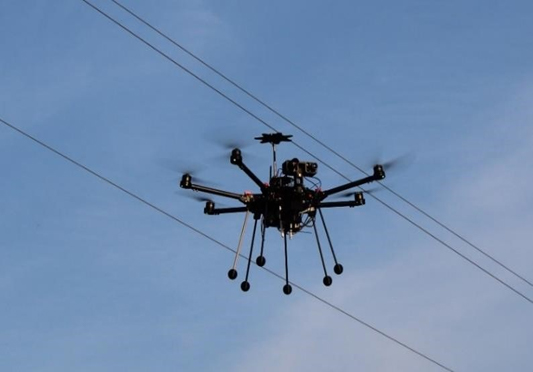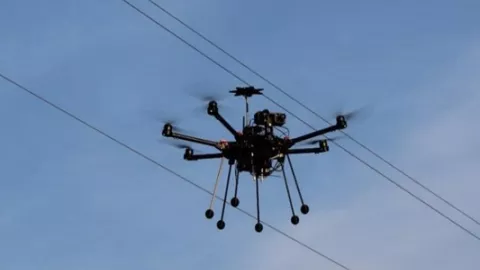Using unmanned vehicles to deploy conductive cables in electricity distribution networks significantly reduces deforestation and commissioning times.
EDP Brasil faces significant challenges in managing the mitigation of biodiversity impacts resulting from electricity distribution activities, given the need to cross areas considered to be of biodiversity value. The Atlantic Forest (rainforest) is the biome impacted by distribution activities in the states of São Paulo and Espírito Santo, at the level of federal, state, and municipal conservation units.

In 2018, while building a 138 kV distribution line in the municipality of Santa Maria de Jetibá (Central Espírito Santo Mountainous Region, the area with the largest native forest in the state), EDP launched a pilot project for using Unmanned Aerial Vehicles (drones) to carry out conductive cable-laying operations, thus replacing more traditional methods that entailed the deforestation of large stretches of terrain.
Drones at the service of biodiversity
Tests carried out during these pilot project phases have shown operating cost-benefits and biodiversity conservation advantages when compared to classic methods. The suppression of native vegetation has been reduced by about 85%, while work execution times have been shortened by 30%. Therefore, it was possible to anticipate the obtaining of an environmental permit and the commissioning of the distribution line.
In view of its excellent results in mitigating biodiversity impacts and simplifying the permit process, the use of unmanned vehicles in the construction of medium- and low-voltage distribution lines has become common practice at EDP Brasil.

